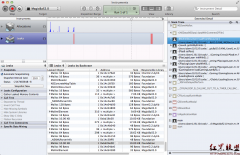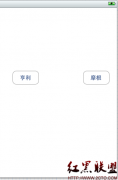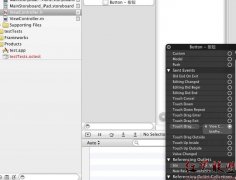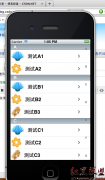iOS 复习题(二)(9)
+ (void)thisIsAStaticMethod;
- (void)thisIsAnInstanceMethod;
@end
@interface Controller (private) -
(void)thisIsAPrivateMethod;
@end
@private可以用来修饰私有变量
在Objective‐C中,所有实例变量默认都是私有的,所有实例方法默认都是公有的
63.假定输入的字符串中只包含字母和*号。编写函数fun,功能是,除了中间和尾部的*号外,
将字符串中其他*号全部删除。编写时,不用c的其他函数。
例:*****A*BC*DEF*G**** 结果为:A*BC*DEF*G****
void fun (char *a)
{
int j=0;
char *p=a;
while (*p=='*')p++;
while (*p){
a[j++]=*p;
p++;
}
a[j]=0;
}
64.截取字符串”20|http://www.621life.com“ 中 ‘|’字符前面及后面的数据,分别输出它们(10分)。
NSString *str = "20|http://www.621life.com";
NSRange range = [strrangeOfString:@"|"];
int location = range.location;
NSString *str1 = [strsubstringToIndex:location];
NSString *str2 = [str substringFromIndex:location+1];
65.获取项目根路径,并在其下创建一个名称为userData的目录。(10分)。
// 获取根路径
NSArray *paths=NSSearchPathForDirectoriesInDomains(NSDocumentDirectory,NSUserDomainMask,YES);
NSString *documentsDirectory = [paths objectAtIndex:];
// 创建文件系统管理器
NSFileManager *fileManager = [[NSFileManageralloc] init];
// 判断userData目录是否存在
if(![fileManagerfileExistsAtPath:[NSStringstringWithFormat:@"%@/userData",documentsDirectory]]) {
// 不存在,创建一个userData目录
[fileManagercreateDirectoryAtPath:[NSStringstringWithFormat:@"%@/userData",documentsDirectory]withIntermediateDirectories:falseattributes:nilerror:nil];
}
66.tableView的重用机制(10分)?
UITableView通过重用单元格来达到节省内存的目的:通过为每个单元格指定一个重用标识符(reuseIdentifier),即指定了单元格的种类,以及当单元格滚出屏幕时,允许恢复单元格以便重用.对于不同种类的单元格使用不同的ID,对于简单的表格,一个标识符就够了.
67.这段代码有什么问题吗
@implementation Person
i. (void)setAge:(int)newAge
{
self.age = newAge;
}
死循环
68.用变量a给出下面的定义
a) 一个整型
b) 一个指向整型数的指针
c) 一个指向指针的的指针,它指向的指针是指向一个整型数
d) 一个有10个整型数的数组
e) 一个有10个指针的数组,该指针是指向一个整型数的
f) 一个指向有10个整型数数组的指针
g) 一个指向函数的指针,该函数有一个整型参数并返回一个整型数
h) 一个有10个指针的数组,该指针指向一个函数,该函数有一个整型参数并返回一个整型数
a) int a;
b) int *a;
c) int **a;
d) int a[10]
e) int *a[10];
相关新闻>>
- 发表评论
-
- 最新评论 进入详细评论页>>






![[iPhone中级]iPhone团购信息客户端的开发 (二)](/uploads/allimg/131022/200H11235-0-lp.png)



